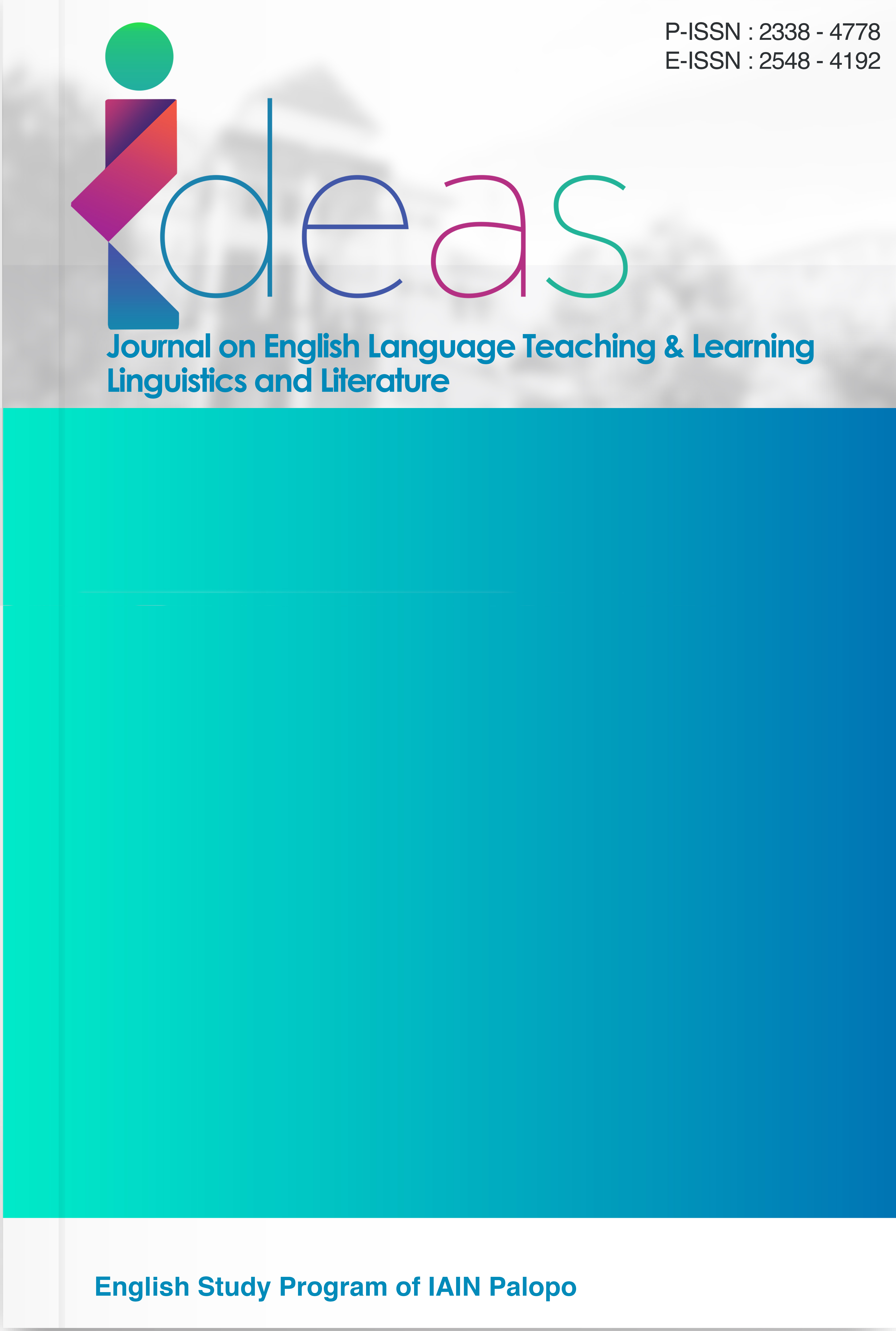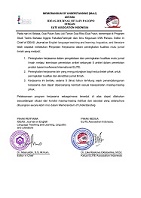Concrete-Abstract Metaphor: Critical Investigation on Figurative Language in Ariana Grande Song Lyrics
DOI:
https://doi.org/10.24256/ideas.v13i2.7840Keywords:
Concrete-Abstract Metaphor, Ariana Grande, Song Lyrics.Abstract
Metaphor provides emotions as an important role in literary works. Especially for personal emotional experiences in a modern song lyric. This research highlights the use of concrete-to-abstract metaphor to represent emotional experiences in a song lyric. While most previous studies only focus on classifying the types of metaphor. This study fills the void by analyzing how concrete-to-abstract metaphors are used in a modern song lyric to express personal emotion. This study aims to learn deep understanding about figurative language by analyzing the concrete-to-abstract metaphors that are found in Ariana Grande song lyrics. This study used descriptive-qualitative methods to analyze the data based on theory that was used in semantics. The data were collected from three songs in Ariana Grande’s album entitled Eternal Sunshine. Data analysis utilized Knickerbocker and Renninger (1963) figurative language theory for the metaphor analysis and Stephen Ullman (1964) for the metaphor types analysis. The study shows lyrics using concrete-to-abstract metaphor. In addition, these findings can expand the understanding of the song writer’s characteristics. It is hoped that this study can be referenced in the study of music, language, literature, and enrich further understanding and appreciation about figurative language and metaphor in various modern music.
References
References
Bernadetta, M. P., Linuwih, E. R., & Kurniawan, Y. (2023). Metaphors in selected Blackpink’s song lyrics. Journal of English Language and Pedagogy (JELPA), 1(1), 22–35. https://doi.org/10.51826/jelpa.v1i1.740
Ismayanti, D., & Syam, A. T. (2022). The Community Manipulation through Big Brother’ s Tyranny in George Orwell’ s Nineteen Eighty-Four. IDEAS: Journal on English Language Teaching and Learning, Linguistics and Literature, 10(2), 1556â-1569.
Kempson, R. M. 1977. Semantic theory. Cambridge: Cambridge University Press. https://books.google.la/books?id=nPRAUZvxaS8C&printsec=frontcover#v=onepage&q&f=false
Knickerbocker, K. L., & Reninger, H. W. 1963. Interpreting literature. New York: Holt, Rinehart and Winston. https://archive.org/details/interpretinglite0000klkn/mode/2up
Listinawati, L., & Nurjanah, R. L. 2023. Metaphor in Lany’s Song Lyrics. The Virtual International Conference on Economics, Law and Humanities, 2(1), 77–82.
Lazar, G. (2003). Meaning and Metaphor: Activities for the Language of Literature. Cambridge: Cambridge University Press. https://assets.cambridge.org/052177/4365/sample/0521774365WS.pdf
Masruddin, M., & Nasriandi, N. (2022). Lexical and Syntactical Errors Performed by Junior High School Student in Writing Descriptive Text. IDEAS: Journal on English Language Teaching and Learning, Linguistics and Literature, 10(1), 1094-1100.
Maulana, N. N. (2025). The Analysis of The Metaphor in Selective Song Lyrics. Educalitra: English Education, Linguistics, and Literature Journal, 4(1), 34-43. https://journal.unupurwokerto.ac.id/index.php/educalitra/article/view/417
McArthur, T. (Ed.). 1992. The Oxford companion to the English language. New York: Oxford University Press. https://books.google.co.id/books/about/The_Oxford_Companion_to_the_English_Lang.html?id=eISV4Z-jim4C&redir_esc=y
Perrine, L. 1988. Sound and sense: An introduction to poetry (8th ed.). California: Harcourt Brace Jovanovich. https://archive.org/details/soundsenseintr00perr
Richards, I. A. (1936). The Philosophy of Rhetoric. Oxford: Oxford University Press.
Ullmann, S. 1964. Semantics: an introduction to the science of meaning. Oxford: Brasil Blackwell. https://archive.org/details/semanticsintrodu0000ullm
Downloads
Published
Issue
Section
Citation Check
License
Copyright (c) 2025 Abel Apriliyanti, Ni Nyoman Deni Ariyaningsih

This work is licensed under a Creative Commons Attribution-ShareAlike 4.0 International License.
Authors retain copyright and grant the journal right of first publication with the work simultaneously licensed under an Attribution-ShareAlike 4.0 International (CC BY-SA 4.0) that allows others to share the work with an acknowledgement of the work's authorship and initial publication in this journal.
Authors are able to enter into separate, additional contractual arrangements for the non-exclusive distribution of the journal's published version of the work (e.g., post it to an institutional repository or publish it in a book), with an acknowledgement of its initial publication in this journal.
Authors are permitted and encouraged to post their work online (e.g., in institutional repositories or on their website) prior to and during the submission process, as it can lead to productive exchanges, as well as earlier and greater citation of published work (See the Effect of Open Access)




